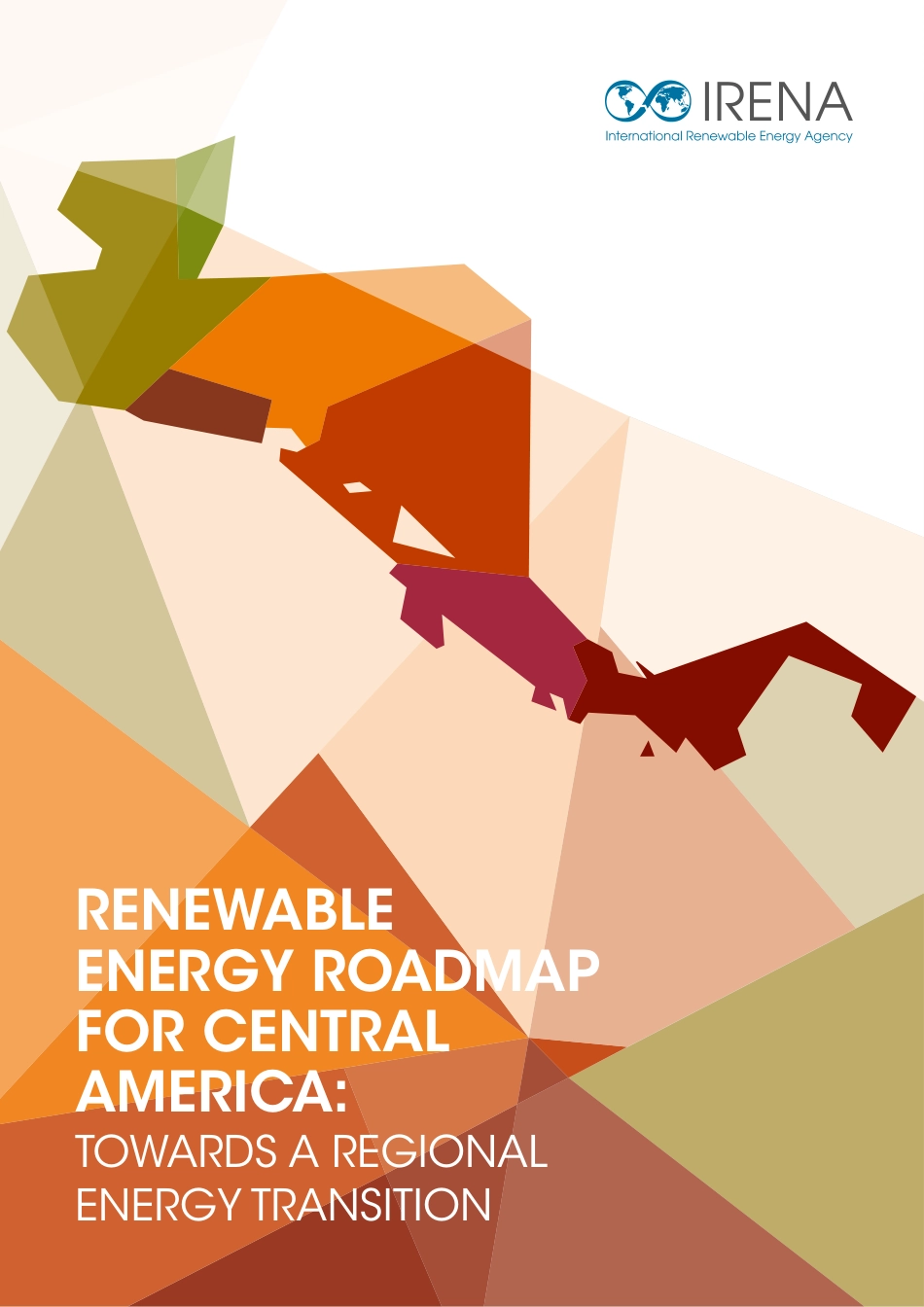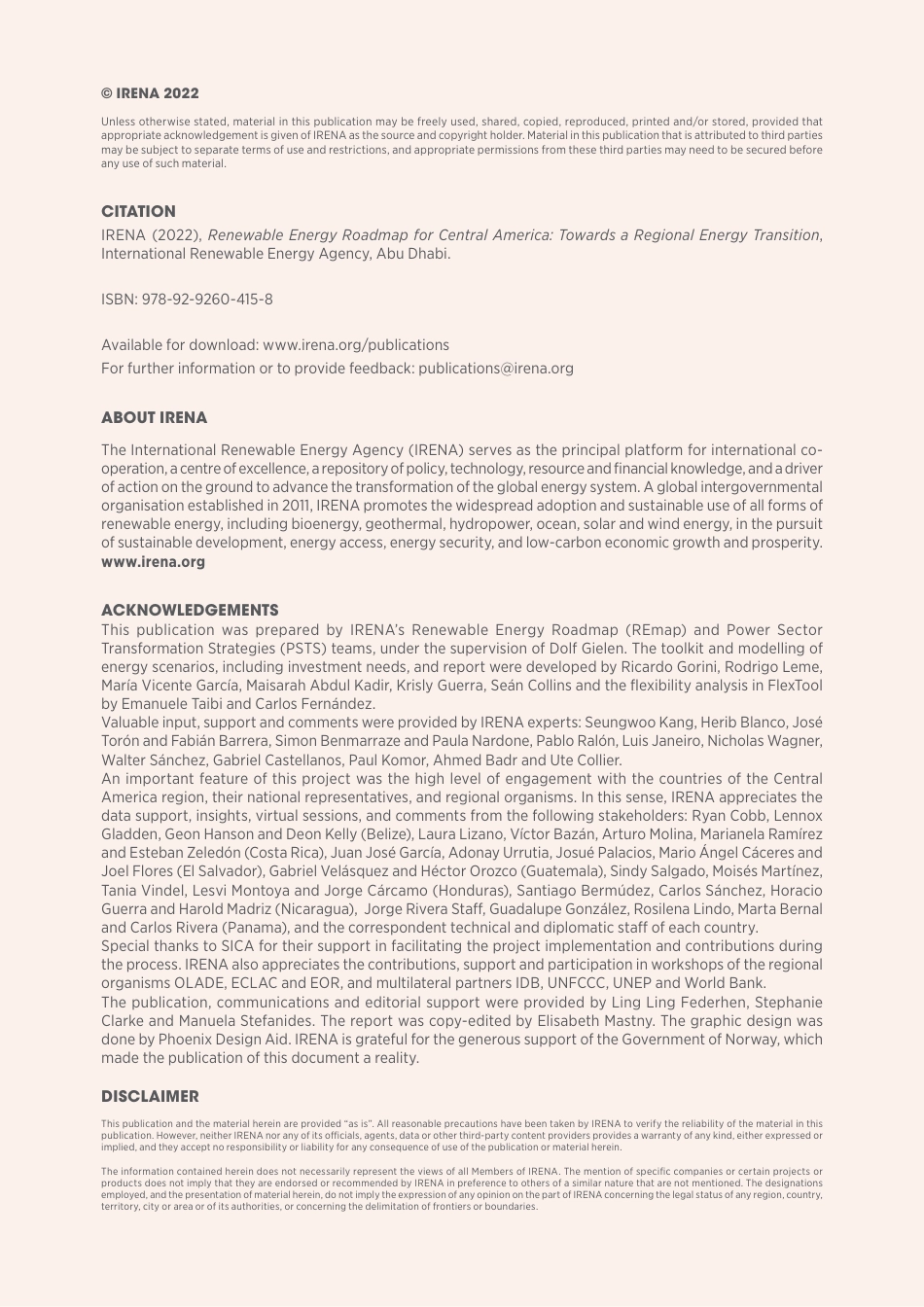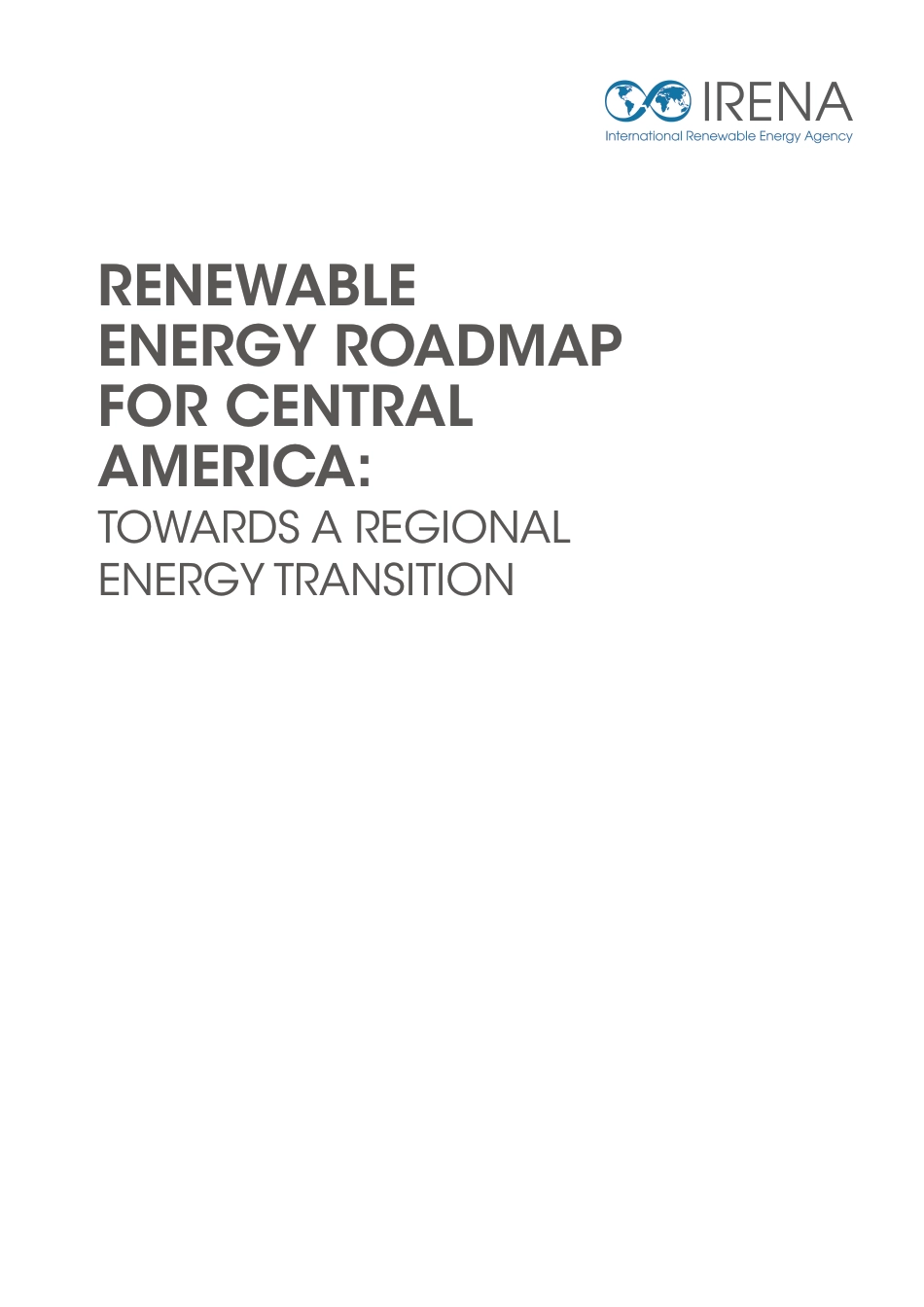RENEWABLE ENERGY ROADMAP FOR CENTRAL AMERICA: TOWARDS A REGIONAL ENERGY TRANSITION RENEWABLE ENERGY ROADMAP FOR CENTRAL AMERICA: TOWARDS A REGIONAL ENERGY TRANSITION© IRENA 2022Unless otherwise stated, material in this publication may be freely used, shared, copied, reproduced, printed and/or stored, provided that appropriate acknowledgement is given of IRENA as the source and copyright holder. Material in this publication that is attributed to third parties may be subject to separate terms of use and restrictions, and appropriate permissions from these third parties may need to be secured before any use of such material.CITATIONIRENA (2022), Renewable Energy Roadmap for Central America: Towards a Regional Energy Transition, International Renewable Energy Agency, Abu Dhabi.ISBN: 978-92-9260-415-8Available for download: www.irena.org/publications For further information or to provide feedback: publications@irena.orgABOUT IRENAThe International Renewable Energy Agency (IRENA) serves as the principal platform for international co-operation, a centre of excellence, a repository of policy, technology, resource and financial knowledge, and a driver of action on the ground to advance the transformation of the global energy system. A global intergovernmental organisation established in 2011, IRENA promotes the widespread adoption and sustainable use of all forms of renewable energy, including bioenergy, geothermal, hydropower, ocean, solar and wind energy, in the pursuit of sustainable development, energy access, energy security, and low-carbon economic growth and prosperity. www.irena.orgACKNOWLEDGEMENTSThis publication was prepared by IRENA’s Renewable Energy Roadmap (REmap) and Power Sector Transformation Strategies (PSTS) teams, under the...



